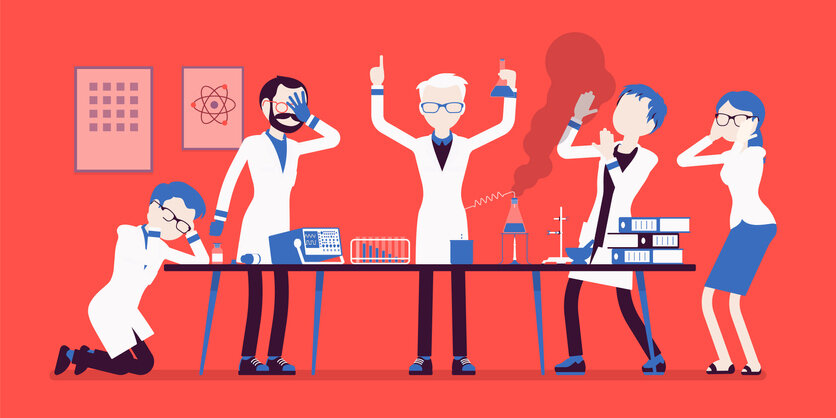Error and fallibility are powerful tools that facilitate students’ psychological and cognitive development.
All learning, research, and projects contain the possibility of error and fallibility. No one wants to make a mistake or lose course. That is why teaching exercises and scientific work are designed to avoid mistakes.
This dynamic tends to increase anxiety and stress in students. However, error and fallibility are powerful tools that can facilitate the psychological and cognitive development of students of all ages. So, it is essential to know what a mistake is. How is it different from failure or flaw? How do these obstacles help us grow?
Error, failure, and flaw
When we speak of learning obstacles, it is important to differentiate them and develop specific strategies to eliminate them and make the most of these cognitive opportunities.
An error is an incorrect idea, action, or expression. In an educational context, it can be a misspelled word or a false result in a math division. In a scientific context, it can mean choosing the wrong variables to delimit the samples in an experiment.
Either way, when we detect a mistake, we can correct it, opening the door to learning what went wrong and not repeat it. On the other hand, a failure signifies committing the error again and not trying to rectify it. The danger of failure lies in a negative situation continuing. However, even this extreme can teach us about the effects of an ongoing unfavorable condition, the management of emotions that result, and how to detect the sources of complex errors to resolve them.
A flaw can be non-compliance with a pre-established function; thus, something does not work as expected. The flaw is one of the most fascinating cognitive and operational obstacles. These are not always linked to errors; they can be related to variables over which we have no control, so if they repeat, this pattern is not necessarily defined as failure. This assertion is even more true when we talk about the purpose of fallibility in science.
When you fail on purpose
What good is a helmet with a toothbrush that does not clean your teeth properly? Or a mechanical hand that touches your head when you give it money? Or a lipstick machine that paints your whole face instead of your lips? You could say that it wastes time and resources to make devices whose sole purpose is to fail or be useless. However, for the engineer and inventor Simone Giertz, failure is the goal.
Giertz began her career as a maker of useless robots in 2015. Today, she has 1.5 million subscribers on her YouTube channel. Her creations’ videos capture attention despite their lack of functionality; the subscribers who follow her do not do so because her inventions are functional.
“It puts me in the mood to do something, it makes me feel motivated,” says Blase Zinck, one of her subscribers, who sums up in one line the effect that Giertz’s work has on her followers who are interested in science. Thanks to her videos, Zinck devised an invention that kept his cats away from his toilet paper.
The inspirational value of Giertz’s work is priceless. It inspires students to think outside the box and take risks needed for creative work and learning.
Made a mistake? Use it for error analysis.
Mistakes are not something to worry about in the learning process. They are so common that there is a method known as error analysis specifically designed to identify their causes when students commit them consistently.
In such an analysis, the student’s work is reviewed for patterns that reflect the point that is not understood or is developed incorrectly. Mistakes in learning mathematics, for example, can be factual, procedural, or conceptual.
Analyzing errors in learning clarifies why students may be wrong and improve the way they are taught. Another relevant example is learning a language. The neural and cognitive processes that enable children to learn a first or second language are incredibly complex. There is a long way to go to understand them fully. Error analysis brings us closer to understanding what happens when a student tries to learn a new language.
In this sense, errors do not drag us backward; they show us new routes for improvement. What has been your experience with mistakes in the exercise of science, teaching, or learning? Tell us in the comments.
Translation by Daniel Wetta.
This article from Observatory of the Institute for the Future of Education may be shared under the terms of the license CC BY-NC-SA 4.0 
)
)


)